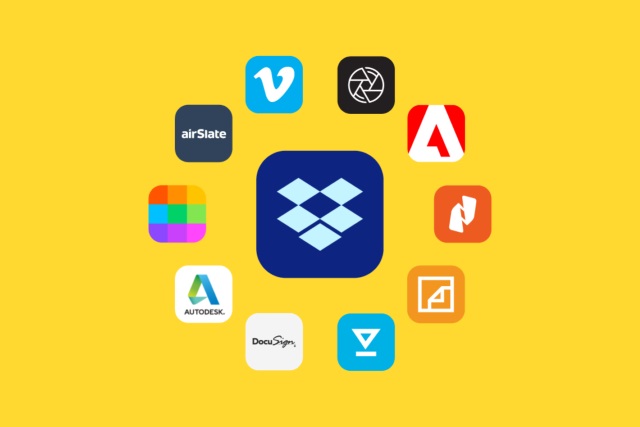
Enterprises struggle to fill the cloud skills gap
According to a new study 94 percent of respondents find it at least 'somewhat difficult' to recruit candidates with the right technology and business skills for driving digital innovation.
The report from AIOps platform company OpsRamp shows that over 60 percent of IT professionals say that a majority of their applications are either built or run using hybrid cloud architectures.

Microsoft rolls out Camera Upload and improved MyAnalytics in the OneDrive mobile apps
Microsoft is rolling out new features to the mobile version of OneDrive. The company has also announced that it is introducing a new Block Download feature in "late November" that can be used to stop people from making copies of a file or its contents.
Android and iOS users can look forward to improvement to the MyAnalytics component, but the big OneDrive news is that the Camera Upload feature has now left beta and is available to everyone -- if they are using Android, that is.

Microsoft market capitalization (briefly) tops Apple (again)
In May 2010, I wrote about Apple's market cap passing top-valued Microsoft; it's only fitting to follow up with an analysis about the unbelievable turnabout that, like the first, marks a changing of technological vanguards. Briefly today, the software and services giant nudged past the stock market's fruit-logo darling. A few minutes after 1 p.m. EST, the pair's respective market caps hovered in the $812 billion range, with Microsoft cresting Apple by about $300 million. By the stock market close, a rally for Apple put distance from its rival: $828.64 billion to $817.29 billion, respectively (Bloomberg says $822.9 billion, BTW). Consider this: As recently as October, Apple's valuation touched $1.1 trillion. But since the company announced arguably record fiscal fourth-quarter earnings on November 1st, investors have punished shares, which currently are down about 21 percent.
Apple has long been a perception stock, even when under the tutelage of CEO Tim Cook company fundamentals deserved recognition. But perhaps Wall Street finally realizes the problem of iPhone accounting for too much of total revenues at a time when smartphone saturation saps sales and Apple pushes up selling prices to retain margins. More significantly: Apple has adopted a policy of fiscal corporate secrecy by stepping away from a longstanding accounting metric. I started writing news stories about the fruit-logo company in late 1999. Every earnings report, Apple disclosed number of units shipped for products contributing significantly to the bottom line. No more. Given current market dynamics, everyone should ask: What is Cook and his leadership team trying to hide?

91 percent see hybrid cloud as the ideal model
Enterprise cloud use is increasing, with with 91 percent naming hybrid cloud as the ideal IT model, yet only 18 percent say they have that model today.
This is one of the findings of a new study by Nutanix to create the first of what is planned to be a global Enterprise Cloud Index, measuring enterprise plans for adopting private, hybrid and public clouds.

The New York Times turns to Google Cloud to digitize its photo archive
The New York Times is to digitize more than a century's worth of photographs, and it is going to use Google Cloud to do so.
The NYT has a massive collection of photos dating back decades, and the plan is to digitize millions of images -- some dating back to the late nineteenth century -- to ensure they can be accessed by generations to come. The digitization process will also prove useful for journalists who will be able to delve into the archives far more easily in future.

Organizations find cloud costs higher than anticipated
Cloud adoption is high, with 78 percent using or planning to use cloud in the future, but most organizations lack a formal strategy to realize the full benefits and 62 percent report higher than anticipated costs.
These are among the findings of a new survey by Syncsort that shows only 29 percent report having a centralized strategy and center of excellence in place to proactively plan and manage applications to the cloud, while 42 percent migrate applications on an ad-hoc basis.

Dropbox Extensions let you edit your cloud-based files online
Dropbox has just announced a new feature that makes it possible to edit your files online without the need to download them first. Dropbox Extensions give you the ability to edit a number of file types without the need to ever navigate away from Dropbox.
The company has formed partnerships with a number of third parties including Adobe, Pixlr and Vimeo to give Dropbox users the option of editing images online, signing PDFs, annotating videos, and much more. Dropbox says the aim of the new integrations is to improve users' workflows.

Misconfigurations put enterprise cloud data at risk
While organizations are increasingly using the public cloud to create new digital experiences for their customers, the average enterprise experiences more than 2,200 misconfiguration incidents per month in their infrastructure-as-a-service (IaaS) and platform-as-a-service (PaaS) instances.
This is among the findings of McAfee's latest Cloud Adoption and Risk Report which also finds that 21 percent of data in the cloud can now be classed as 'sensitive', putting the business at risk if it's stolen or leaked.

Microsoft defends its JEDI cloud project bid
Google may have pulled out of the Pentagon's $10 billion JEDI cloud project, but Microsoft has no intention of following suit. Company president Brad Smith has used a blog post to defend the decision to bid for military contracts, despite pressure from its employees.
Smith recognizes that there are ethical concerns about getting involved in military projects, particularly when artificial intelligence technology is involved. However, he says: "we believe in the strong defense of the United States and we want the people who defend it to have access to the nation's best technology, including from Microsoft".

Identity and access management a major concern for cloud deployments
According to a new report, 71.5 percent of violations on AWS occur around identity and access management (IAM).
The study from cloud security company Netskope analyzed the Center for Internet Security's Benchmarks for AWS. Many of the IAM violations found involve instance rules, role-based access controls, and access to resources or password policy requirements -- things that enterprises can easily address even without an external security solution.

Want to find the biggest cloud security threat? Look in the mirror [Q&A]
It seems not a day goes by without a new cloud data breach making headlines. And though the victims change, the attack details remain the same. Why do organizations keep repeating the same cloud security mistakes? And how can we break free from this vicious cycle?
We spoke to Zach Malone, security engineer at security management specialist FireMon, who discusses these issues and tells us why, to identify the biggest threat to cloud security, we need to look in the mirror.

Enterprise security teams struggle to balance budgets against demands
Businesses are increasingly moving more of their operations to the cloud and this leads to a greater focus on securing these workloads.
Cloud infrastructure security company Threat Stack has released a new report created by Vanson Bourne which shows 54 percent of businesses are worried that they will soon outgrow their security solutions.

How to remove shows without a delete option in Sling Cloud DVR
If you weren’t already familiar with Sling TV then you’ve likely had an amusing introduction thanks to recent "Slingers" ads. If you’re still lost, Sling is a live TV service that provides many mainstream channels such as ESPN, CNN and an estimated 100 or so more. If there’s one you want and don’t currently get then there are addon packs you can choose from.
While Sling has been around since early 2015, it still has some growing pains. None, at least so far, have been game changers, more minor annoyances than glaring mistakes.

Carbon Black launches advanced threat hunting from the cloud
Most endpoint detection tools collect only a limited set of data, which can make it hard for teams to track down and combat threats.
To address this issue, endpoint security specialist Carbon Black is launching a new threat hunting tool as part of its Predictive Security Cloud (PSC).

Dropbox makes PDFs and images searchable with automatic OCR feature
Dropbox is in the process of launching a new feature that will make life easier for people using the cloud storage service to house PDFs and image files: automatic OCR.
The optical character recognition is rolling out to paying subscribers, and is an acknowledgement of the fact that a large proportion of files uploaded to Dropbox are photographs of documents. By adding machine learning-powered OCR, Dropbox is making these files searchable.
